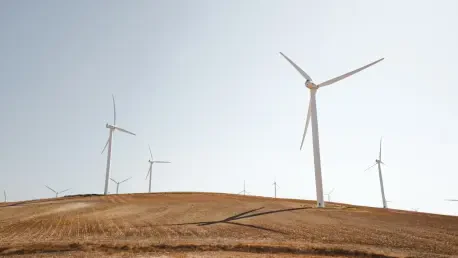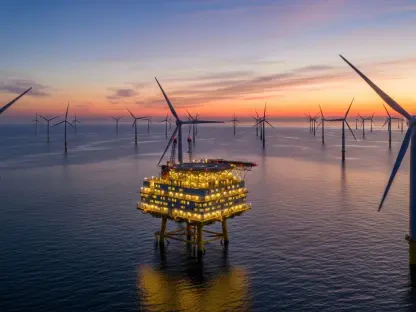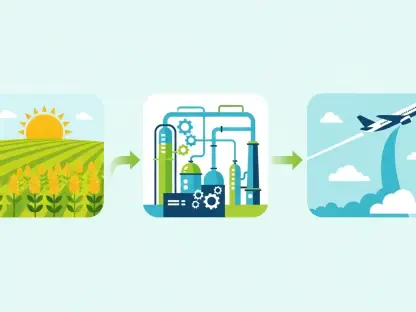Wind energy has long been considered a crucial component of the transition to renewable energy sources, providing a cleaner alternative to fossil fuels and contributing to reduced greenhouse gas emissions. Despite its potential, wind farms have faced criticism for their perceived inefficiency and the threat they pose to bird populations. However, recent developments and studies have begun to reshape these perceptions, highlighting the actual efficiency of wind farms and exploring innovative solutions to mitigate avian risks.
A 2024 study conducted by McGill University revealed that wind power infrastructure utilizes only approximately five percent of the land it occupies. This finding contrasts sharply with the often exaggerated claims about the land use inefficiency of wind farms. The remaining land can frequently be used for agricultural purposes or other activities, creating a synergistic relationship between wind energy and land use. Furthermore, placing wind turbines in areas with existing infrastructure can enhance their efficiency significantly, making them up to seven times more productive. Such insights are crucial for optimizing wind farm locations and maximizing their output while minimizing land disruption.
Land Use Efficiency
The integration of wind energy and agricultural activities has become increasingly evident, supporting the notion that land use for wind farms does not necessarily exclude other functions. For instance, BC Hydro has recently approved nine new contracts with independent wind farm companies across various regions, reflecting a growing acceptance of wind energy’s compatibility with agriculture. Though cattle ranchers have expressed concerns about turbines’ impact on livestock and environmental systems, thorough environmental assessments can address these issues effectively. These assessments ensure that wind farms are designed and operated in a manner that minimizes disturbance to local ecosystems and farming operations.
Critics often point to the petrochemicals required for turbine production as a drawback of wind energy, arguing that it still relies on non-renewable resources. However, when compared to the environmental impact of the oil and gas industry, the use of petrochemicals in turbine production is relatively minor. Wind energy’s contribution to Canada’s electricity generation reached six percent in 2024, with capacity expanding by 35 percent since 2019. This growth underscores wind energy’s cost-effectiveness and the increasing recognition of its environmental benefits. The ongoing efforts to enhance wind farm efficiency and integrate them with existing land uses demonstrate wind energy’s evolving role in sustainable development.
Protecting Birds
While wind energy’s contribution to sustainable power generation is undeniable, concerns about its impact on bird populations persist. Significant advancements have been made to address these concerns and ensure safer coexistence between wind farms and avian species. One notable study by the Norwegian Institute for Nature Research found that painting one blade of a turbine black resulted in a remarkable 70 percent reduction in bird fatalities. This simple yet effective modification has sparked further interest and research into color-based deterrents as a means to protect birds.
The largest study of its kind, the Glenrock/Rolling Hills study in Wyoming, is currently underway. This research examines the effectiveness of painting turbines across various locations and bird species, aiming to gather comprehensive data on how this practice can be broadly implemented. Such studies are pivotal in developing strategies that balance the need for renewable energy with the preservation of wildlife. By focusing on practical solutions and rigorous scientific evaluations, the industry is making strides toward reducing the negative impact on birds while continuing to expand wind energy capacity.
Moving Forward
Wind energy has long been integral to the shift toward renewable energy sources. It offers a cleaner alternative to fossil fuels and helps reduce greenhouse gas emissions. However, wind farms have faced criticism over their efficiency and the risk they pose to bird populations. Recent studies are reshaping these views, demonstrating wind farms’ actual efficiency and exploring ways to reduce avian risks.
A 2024 study from McGill University showed that wind power infrastructure uses about five percent of the land it occupies, refuting exaggerated claims about land use inefficiency. The remaining land can often be used for agriculture or other activities, creating a positive relationship between wind energy and land use. Furthermore, situating wind turbines in areas with existing infrastructure can greatly enhance their efficiency, making them up to seven times more productive. These insights are crucial for optimizing wind farm locations, maximizing output, and minimizing land disruption, highlighting the evolving landscape of wind energy.









